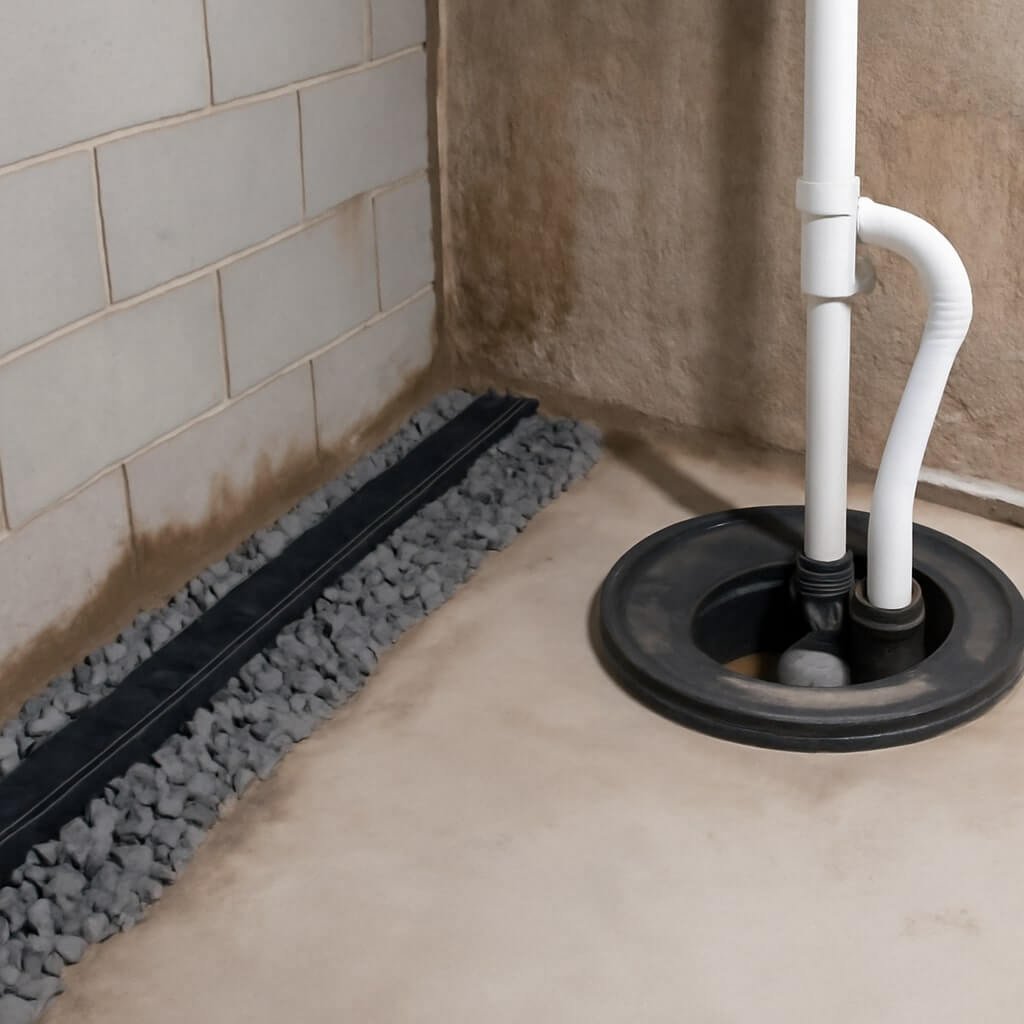Keeping your basement dry is essential for maintaining a healthy and safe home environment. Water intrusion can cause mold, mildew, and structural damage. A reliable basement drainage system can prevent these problems by redirecting water away from your home. In this guide, we’ll explore the best basement drainage systems, their benefits, and how to choose the right one for your needs.
Why Basement Drainage Systems Are Important
Basement drainage systems are crucial for homeowners who want to protect their basements from water damage. Heavy rainfall, snowmelt, and rising groundwater can lead to water infiltration in your basement. Without an effective drainage system, moisture can accumulate, leading to mold growth, wood rot, and compromised structural integrity.
Types of Basement Drainage Systems
There are several types of basement drainage systems, each designed to address specific drainage needs. Let’s dive into the most common systems:
1. Interior French Drain
An interior French drain system is one of the most popular basement drainage solutions. It consists of a perforated pipe installed along the perimeter of your basement floor. The pipe redirects water to a sump pump, which pumps it out of your home. This system works best for basements with minor water issues.
2. Exterior French Drain
The exterior French drain system is installed outside your foundation. It helps prevent water from reaching the basement in the first place. This system is ideal for new homes or if you’re undertaking extensive landscaping work around your home. It’s highly effective at redirecting water away from the foundation before it can seep inside.
3. Sump Pump System
A sump pump system is a crucial component in any basement drainage system. The sump pump is installed in a pit (called a sump basin) and is designed to remove excess water from the basement. It works by automatically pumping water away from the foundation to a designated drainage area. Sump pumps are especially useful in areas prone to flooding.
4. Window Well Drainage System
For homes with basement windows that are below ground level, a window well drainage system is essential. This system prevents water from accumulating in window wells, which can lead to basement flooding. It typically includes a drainage pipe that directs water away from the window well.
5. Channel Drainage System
A channel drainage system, also known as a trench drain, is designed to collect water from a specific area and direct it to a sump pump or storm drain. It’s commonly used for driveways or patios but can also be installed in basements with water issues.
How to Choose the Right Basement Drainage System
When selecting a basement drainage system, consider factors like the severity of your water problems, the structure of your home, and your budget. Here are some key points to guide your decision:
- Severity of Water Issues: If your basement experiences frequent flooding, an exterior French drain or sump pump system may be necessary. For occasional water seepage, an interior French drain or window well drainage might suffice.
- Budget: Basement drainage systems can range in cost. A DIY installation can reduce costs, but a professional installation ensures optimal performance.
- Basement Layout: The layout of your basement will determine the best type of drainage system. Consider whether water is entering through the walls or floors, and if window wells are present.
Benefits of Basement Drainage Systems
Investing in a basement drainage system offers several advantages:
- Prevents Water Damage: A drainage system keeps your basement dry, preventing water from damaging your foundation, walls, and flooring.
- Improves Air Quality: Moisture in the basement can lead to mold and mildew growth. A dry basement ensures better air quality and reduces the risk of respiratory issues.
- Increases Home Value: A dry basement adds to the overall value of your home by maintaining its structural integrity.
- Protects Belongings: Water damage can ruin stored items. A proper drainage system ensures your belongings remain safe and dry.

